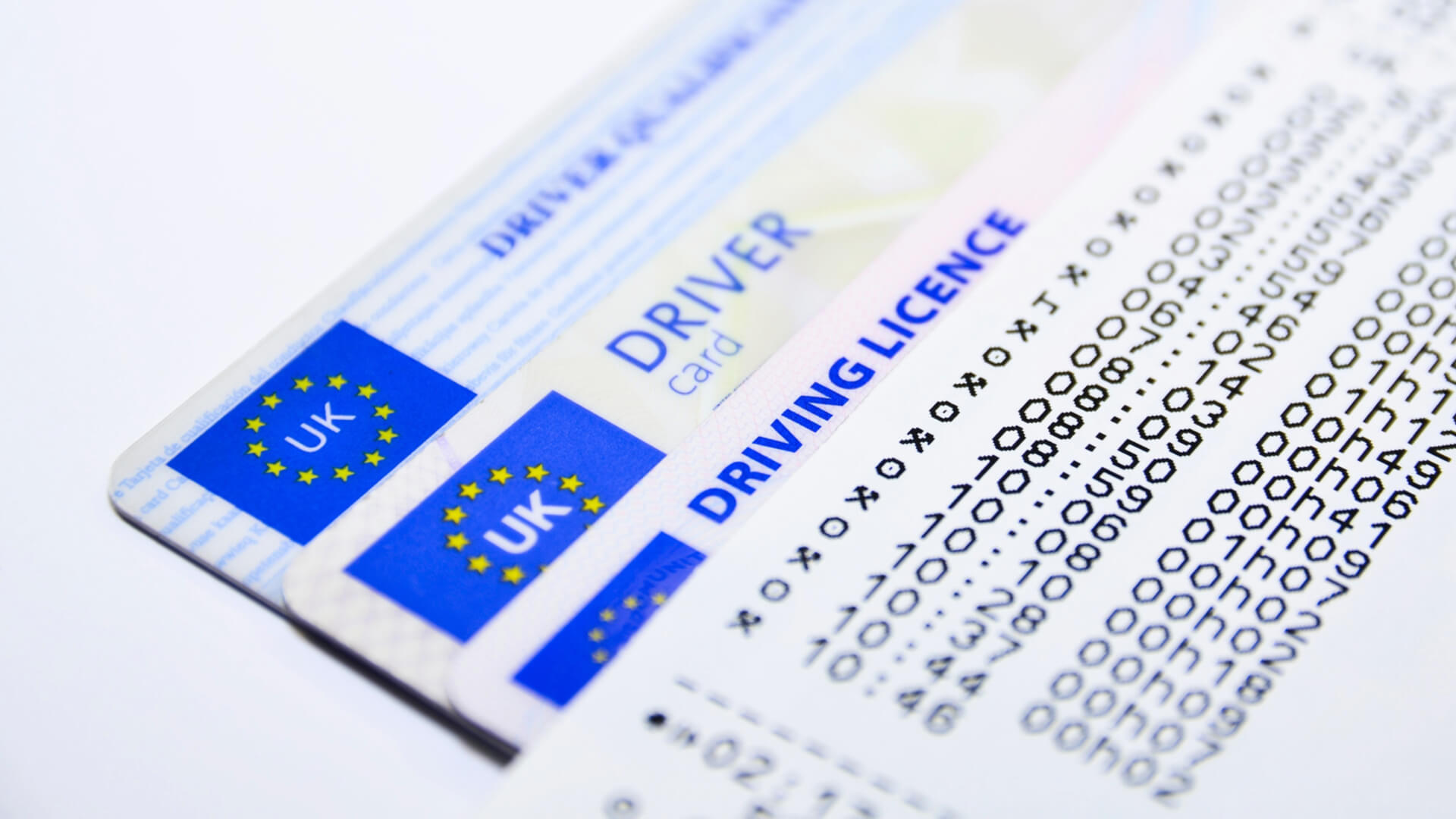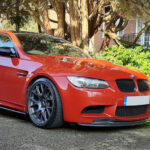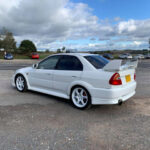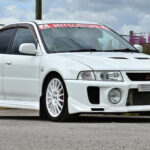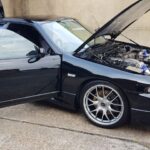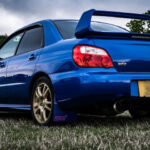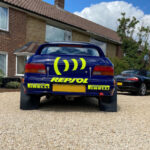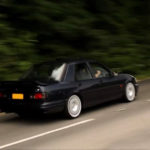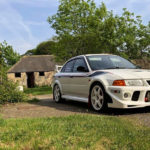Driving Licence Categories Explained
So, what do the UK’s driving licence categories and codes mean?
It can be confusing, so we have compiled a guide to what vehicle you can drive with what licence.
Moped and Motorcycle Categories
Category AM Licence
The AM licence originally covered mopeds and other two or three wheel vehicles. However, it was eventually repurposed to include light quadricycles, which are four wheeled vehicles with an un-laden weight of up to 350kg and a top speed of between 25 km/h and 45 km/h.
Category A1 Licence
Age:17
With a Category A1 licence, you can drive light motorbikes with an engine size up to 125cc, a power output of up to 11kW and a power to weight ratio of no more than 0.1kW. It also allows you to drive motor tricycles with a power output of up to 15kW. You have to be aged 17 or over to apply for a category A1 licence.
Category A2 Licence
Ag: 19
An A2 licence lets you ride a motorcycle with a power output not exceeding 35 kW and with a power/weight ratio not exceeding 0.2 kW/kg and not derived from a vehicle of more than double its power.
Category A Licence
Age: 21
A Category A licence is a full motorcycle licence. This lets you ride bikes with a power exceeding 35 kW, and also covers motor tricycles over 15 kW.
Car and Light Vehicle Categories
Category B Licence
Age:17
The category B licence lets you drive a motor vehicle with a maximum weight of up to 3,500kg, it can’t have more than eight passenger seats. If you want to use a trailer the most it can weigh without additional hassle is 750kg.
OR
If you would like to use your car with a trailer that weighs more than 750kg, then the total weight of the vehicle and the trailer together cannot be greater than 3,500kg. Also, the weight of the trailer, when fully loaded, cannot be more than the unladen weight of the vehicle.
Category B Auto Licence
The Category B auto licence has the same conditions as a category B licence but, it only lets you use a vehicle with an automatic transmission.
Category B96 Licence
The B96 licence lets you use a car and trailer where your towing vehicle is in category B. The total weight of the trailer exceeds 750kg and the combination of car and trailer is more than 3.5 tonnes but does not exceed 4.25 tonnes.
Category B+E Licence
The Category B+E licence lets you use a combination of a category B motor vehicle and a trailer or semi trailer which wouldn’t fit the conditions of category B. The maximum authorised mass of the trailer or semi trailer is 3500kg. Giving you a total maximum authorised mass of 7 tonnes.
Van and Commercial Vehicle Categories
Category C1 Licence
Age: 18
The Category C1 licence lets you drive vehicles weighing between 3,500 and 7,500kg with the option of a trailer which cannot weigh more than 750 kg. This licence lets you drive commercial vans without needing to take the full category C licence.
Category C1+E Licence
Age: 18
The C1 category licence lets you drive vehicles with a trailer over 750kg, but the trailer – when fully loaded – cannot weigh more than the vehicle. The combined weight of both cannot exceed 12,000kg.
Category C Licence
Age: 21
The Category C licence lets you drive HGVs over 3,500kg (with a trailer up to 750kg).
Category C+E Licence
Age: 21
The Category C licence lets you drive HGV’s with a trailer that weighs more than 750kg.
Minibus and Coach Categories
Category D1 Licence
Age: 21
The Category D1 licence lets you drive minibuses classified as: vehicles with no more than 16 passenger seats, a maximum length of 8 metres. It provides you leeway to tow a trailer that weighs up to 750kg
Category D1+E Licence
Age: 21
The Category D1 + E licence lets you drive a category D1 minibus with a trailer that weighs a maximum of 750kg, but the fully laden trailer must not weigh more than the vehicle. The combined weight of both is a maximum of 12,000kg.
Category D Licence
Age: 21
The Category D licence can drive any bus or coach with more than 8 passenger seats, with the option of a trailer less than 750kg.
Category D+E Licence
Age: 21
The Category D+E licence lets you drive any bus or coach with a trailer over 750kg.
Other
Tractor – Category F Licence
The Category F licence lets you drive agricultural tractors, these can also be driven on a category B licence.
Road Roller – Category G Licence
The Category G licence lets you drive road rollers, either steam or diesel driven.
Tank and Tracked Vehicle Categories – Category H Licence
A Category H licence covers civilian tracked vehicles, which include former military vehicles. Many WW2 era tanks are still operational today; these can be driven on the roads with your full car licence counting as a provisional.
Pedestrian Controlled Vehicle Categories – Category K Licence
A Category K licence lets you drive a ride- on mowing machine or pedestrian controlled vehicle. Again, like category F, these can be driven on a category B licence.
DVLA Check Code
Since 2015, the paper counterpart of UK driving licences was replaced by a new online system. Now, from the gov.uk website, you can access your full driving record and generate a DVLA “check code” to grant third parties access to your records.
What is the DVLA check code?
A DVLA check code is a unique, temporary access code that allows third parties to view your digital driving record. Some third parties, such as car hire companies, need access to your driving record for you to use their services. The code is temporary to protect your personal driving data.
What information does the DVLA’s system hold?
The database includes:
- Type of licence you hold
- Length of time you’ve held the licence for
- Type of cars you can drive
- Penalty points
- Convictions
- Conviction dates
Not all personal information is accessible by insurers and other third parties. Your medical information, full address details and motor history prior to the last five years remains private and not shared with them.
Parking fines do not count as motoring offences, so they don’t appear on your driving licence record.
How do I get a DVLA check code?
To get your DVLA check code, visit the gov.uk website and follow the on-screen instructions. Using their service you can view your driving record and check you penalty points or disqualifications. You can also generate a licence check code.
How long does a DVLA code last for?
Check codes are valid for 21 days. After that time, the code doesn’t work and you’ll need to generate a new one. This helps keep your personal driving licence data as secure as possible.
Do hire companies check driving licences?
UK car rental companies are legally required to check your full driving licence, which is why you need a check code to give them access.
When travelling abroad, it varies from country to country, but some hire companies do ask to see your full history as well as your photocard licence to check for any points and fines.
Insurers may also request access to your driving history. By sharing your record with insurers, you’ll avoid making mistakes when manually entering past motoring convictions, which can invalidate your insurance. This transparency also helps tackle insurance fraud and improve overall road safety by providing a more accurate risk assessment of drivers.
Driving Licence Codes Explained
In addition to the categories on your licence, you may also notice numbered codes. These can be understood as follows:
Health-related Codes
01 – eyesight correction, for example glasses or contact lenses
02 – hearing/communication aid
115 – organ donor
Modification Codes
10 – modified transmission
15 – modified clutch
20 – modified braking systems
25 – modified accelerator systems
35 – modified control layouts
40 – modified steering
42 – modified rear-view mirror(s)
43 – modified driving seats
44 – modifications to motorbikes
Other Codes
70 – exchange of licence
71 – a duplicate of the licence
101 – not for hire or reward (that is, not to make a profit)
103 – subject to certificate of competence
118 – start date is for earliest entitlement
119 – weight limit for the vehicle does not apply
122 – valid on successful completion: Basic Moped Training Course 125 – tricycles only (for licences issued before 29 June 2014)
Adapted/Adjusted Codes
31 – pedal adaptations and pedal safeguards
44 (1) – single operated brake
44 (2) – adapted front wheel brake
44 (3) – adapted rear wheel brake
44 (4) – adapted accelerator
44 (5) – (adjusted) manual transmission and manual clutch
44 (6) – (adjusted) rear-view mirror(s)
44 (7) – (adjusted) commands (direction indicators, braking light, etc)
44 (8) – seat height allowing the driver, in sitting position, to have two feet on the surface at the same time and balance the motorcycle during stopping and standing
44 (11) – adapted foot rest
44 (12) – adapted hand grip
‘Combined’ Codes
30 – combined braking and accelerator systems (for licences issued before 28 November 2016)
32 – combined service brake and accelerator systems
33 – combined service brake, accelerator and steering systems
Restriction Codes
45 – motorbikes only with sidecar
46 – tricycles only (for licences issued before 29 June 2014)
78 – restricted to vehicles with automatic transmission
79 – restricted to vehicles in conformity with the specifications stated in brackets on your licence
79 (2) – restricted to category AM vehicles of the 3-wheel or light quadricycle type
79 (3) – restricted to tricycles
96 – allowed to drive a vehicle and trailer where the trailer weighs at least 750kg, and the combined weight of the vehicle and trailer is between 3,500kg and 4,250kg
97 – not allowed to drive category C1 vehicles which are required to have a tachograph fitted
102 – drawbar trailers only
105 – vehicle not more than 5.5 metres long
106 – restricted to vehicles with automatic transmissions
107 – not more than 8,250 kilograms
108 – subject to minimum age requirements
110 – limited to transporting persons with restricted mobility
111 – limited to 16 passenger seats
113 – limited to 16 passenger seats except for automatics
114 – with any special controls required for safe driving
121 – restricted to conditions specified in the Secretary of State’s notice
Whether you live abroad, drive a lorry, or a Lamborghini we can tailor your policies your needs.
Driving Licence Category FAQs
Some vehicles you are eligible to drive by simply passing your standard driving test, and some vehicles will require an additional test or tests to drive them legally, which won’t appear on your driving licence.


